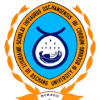MONITORING AND EVALUATION OF THE GLOBAL ACTION PLAN ON ANTIMICROBIAL RESISTANCE
he global action plan on antimicrobial resistance (hereinafter “GAP”) is the world’s blueprint for tackling the emergence and spread of antimicrobial resistance (AMR), which threatens many of the global Sustainable Development Goals (SDGs) on health, food security, environmental well-being and socioeconomic development. Adopted by the membership of WHO, the Food and Agriculture Organization of the United Nations (FAO) and the World Organisation for Animal Health (OIE) in 2015, the GAP was further endorsed by political leaders in 2016, when Heads of State issued a high-level political declaration on AMR (resolution A/RES/71/3) during the seventy-first session of the United Nations General Assembly, committing them to implementing the GAP at the global, regional and national levels.
The GAP articulates five objectives for tackling AMR, and sets out the tasks required to achieve them, highlighting roles and responsibilities for country governments, the One Health Tripartite organizations (FAO, OIE and WHO) and other national and international partners. To ensure that all stakeholders assume their roles and responsibilities, and to assess whether they are collectively effecting the necessary change in AMR, the implementation of the GAP needs to be routinely monitored and evaluated. To that end, the Tripartite organizations co-developed a monitoring and evaluation (M&E) framework for the GAP, as outlined in this document.











